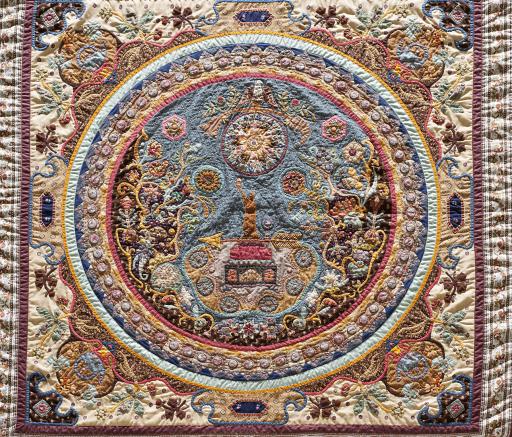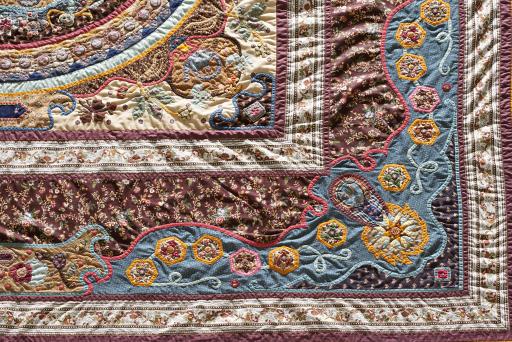China Trade with Miss Liberty, U.S.A. quilt top, Virginia Jean Cox Mitchell
Artwork Overview
Virginia Jean Cox Mitchell, artist
1931–2023
China Trade with Miss Liberty, U.S.A. quilt top,
1986
Where object was made: Lawrence, Kansas, United States
Material/technique: appliqué; cotton; piecing; stitching
Dimensions:
Object Length/Width (Length x Width): 229.9 x 229.9 cm
Object Length/Width (Length x Width): 90 1/2 x 90 1/2 in
Object Length/Width (Length x Width): 229.9 x 229.9 cm
Object Length/Width (Length x Width): 90 1/2 x 90 1/2 in
Credit line: Gift of Virginia Jean Cox Mitchell and Bill
Accession number: 2013.0173
Not on display
If you wish to reproduce this image, please submit an image request









